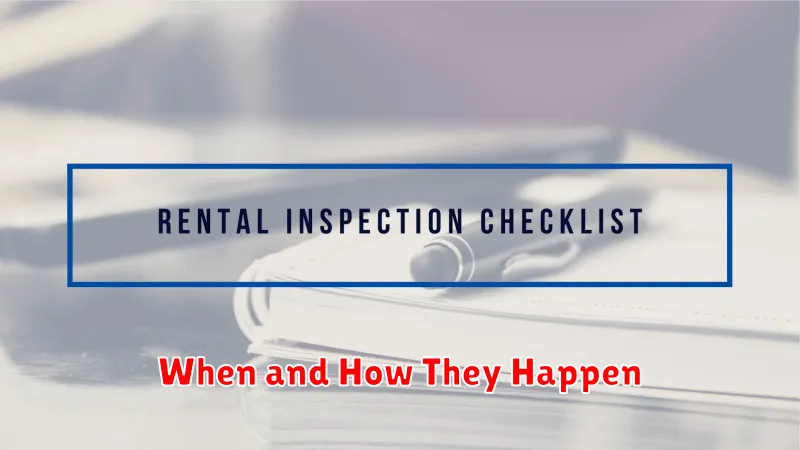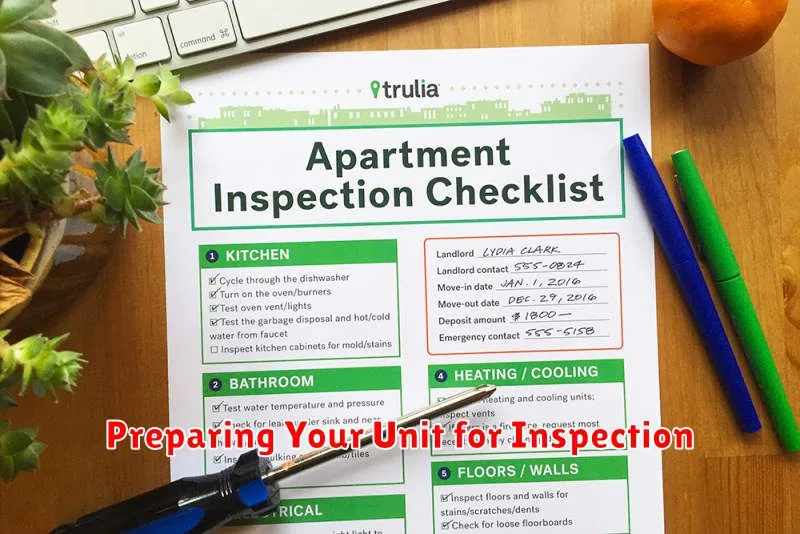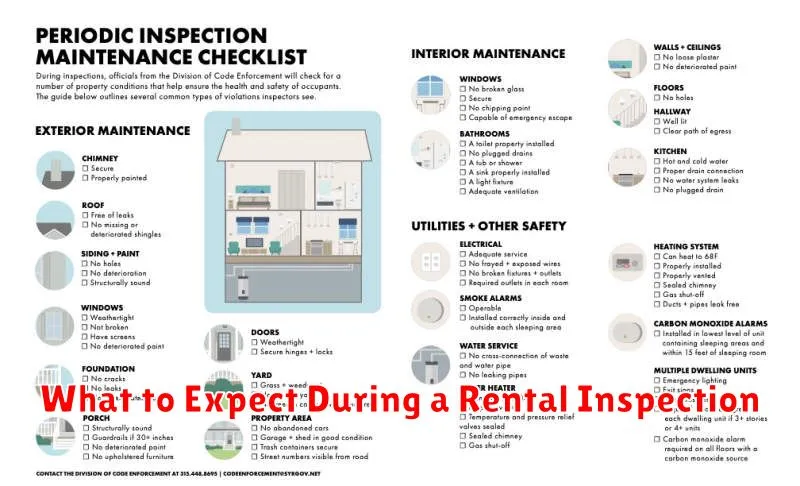Preparing for a rental inspection can be stressful, but understanding what to expect can ease your anxieties and help you ensure a smooth process. This guide covers everything you need to know about rental inspections, from the landlord’s responsibilities to your tenant rights, and offers helpful tips for a successful inspection. Whether this is your first rental inspection or you’re a seasoned renter, understanding the process is key to a positive landlord-tenant relationship. We’ll address common questions like: What is the purpose of a rental inspection? How should I prepare for a rental inspection? and What are my rights during a rental inspection?
Learn about the typical timeframe for rental inspections, what landlords look for during an inspection, and what to do if issues arise. This comprehensive guide aims to empower you with the knowledge you need to navigate the rental inspection process with confidence. We’ll also explore the importance of documentation and communication, ensuring you’re well-prepared for your next rental inspection. By understanding your rights and responsibilities as a tenant, you can approach your rental inspection with confidence and maintain a positive living environment.
Purpose of Rental Inspections
Rental inspections serve a critical purpose for both landlords and tenants. They ensure the property is being maintained appropriately and address any potential issues before they escalate. Inspections allow landlords to confirm the terms of the lease are being upheld, such as the number of occupants and adherence to pet policies.
For landlords, inspections protect their investment by identifying necessary repairs, preventing damage, and confirming responsible tenancy. For tenants, inspections provide an opportunity to document the condition of the property and raise any concerns regarding maintenance or repairs.
Ultimately, regular inspections promote a positive landlord-tenant relationship built on transparency and open communication.
When and How They Happen

Rental inspections are a routine part of the tenancy agreement. They allow landlords to assess the condition of their property and ensure tenants are complying with the terms of their lease.
Timing varies depending on your lease and local laws. Inspections typically occur before you move in, periodically during your tenancy (e.g., every three, six, or twelve months), and after you move out. Your landlord should provide reasonable notice, typically 24 to 72 hours, before conducting an inspection.
How inspections are conducted also differs. The landlord or a designated property manager will usually walk through the property, taking notes and potentially photos to document its condition. They’ll be looking for any damage beyond normal wear and tear, unauthorized alterations, and compliance with health and safety standards.
Areas Typically Checked
During a rental inspection, the landlord or property manager will systematically assess various areas of the property. These checks help ensure the property is being maintained according to the lease agreement and identify any potential issues.
Key areas typically examined include:
- Living Areas: Walls, floors, ceilings, windows, and doors are checked for damage or excessive wear and tear.
- Kitchen: Appliances, cabinets, countertops, sinks, and plumbing fixtures are inspected for cleanliness and functionality.
- Bathrooms: Similar to kitchens, bathrooms are assessed for cleanliness, with particular attention to plumbing, fixtures, and ventilation.
- Bedrooms: Walls, closets, and windows are checked for damage.
- Safety Devices: Smoke detectors, carbon monoxide detectors, and fire extinguishers are tested to ensure they are operational.
- Exterior: The yard, landscaping, and exterior structure of the property may also be assessed depending on the lease terms.
Preparing Your Unit for Inspection

A rental inspection is a standard procedure landlords use to assess the condition of their property. Proper preparation ensures a smooth process and demonstrates responsible tenancy. Here’s how to get ready:
Cleaning
Cleanliness is paramount. Thoroughly clean your entire unit, including often overlooked areas like the inside of appliances, under sinks, and inside closets. Pay attention to details like baseboards and light fixtures.
Repairs & Maintenance
Address any minor repairs you are responsible for. This might include replacing burnt-out light bulbs or fixing leaky faucets. If there are larger maintenance issues that fall under the landlord’s responsibility, ensure you’ve communicated these previously and have documentation.
Organization & Clutter
A tidy and organized space makes a positive impression. Declutter shelves, countertops, and floors. Organize closets and storage areas to showcase responsible upkeep.
Safety Check
Ensure all smoke detectors are functioning correctly and test them before the inspection. Check carbon monoxide detectors as well, if applicable.
Rights and Responsibilities During Inspection
Both landlords and tenants have specific rights and responsibilities during a rental inspection. Understanding these is crucial for a smooth process.
Tenant Rights
Tenants have the right to reasonable notice of an inspection, typically 24-72 hours depending on local laws. They also have the right to be present during the inspection, though it isn’t always mandatory. Additionally, tenants have a right to a safe and private living environment, meaning the inspection should be conducted respectfully and at a reasonable time.
Tenant Responsibilities
Tenants are responsible for providing access to the property for the scheduled inspection. While reasonable cleanliness is expected, the property doesn’t need to be spotless. It’s important to address any known maintenance issues with the landlord prior to the inspection if possible.
Landlord Rights
Landlords have the right to inspect the property to ensure its condition and compliance with the lease agreement. This includes checking for damage, needed repairs, and lease violations.
Landlord Responsibilities
Landlords are responsible for providing proper notice of the inspection. They must also conduct the inspection in a reasonable and respectful manner, adhering to all applicable laws regarding entry and privacy.

